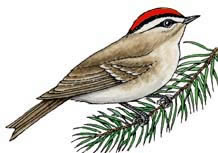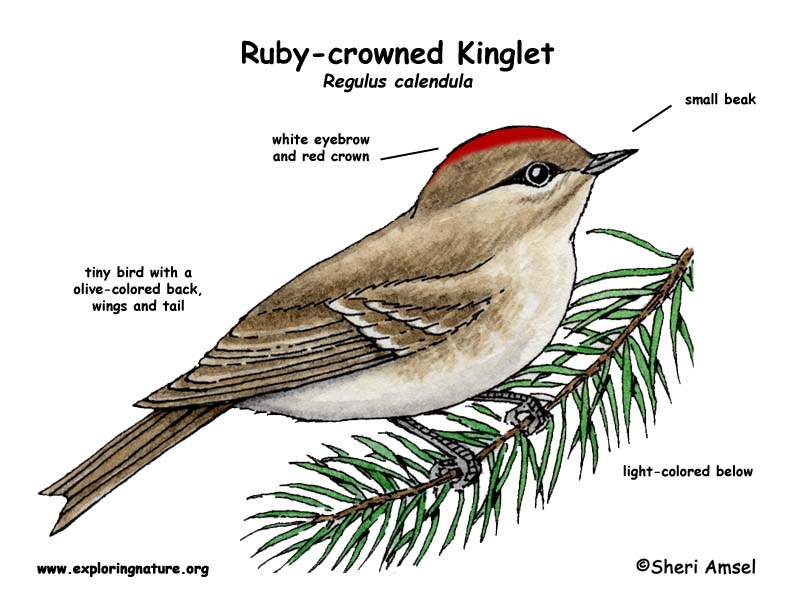

They breed from Alaska across Canada to Newfoundland, south in the eastern U.S. to New Hampshire, mid-U.S. to northern Wisconsin, and in Canada south to central Alberta. Southwest their range goes into the mountains or southern California, Arizona, and New Mexico. They spend the winter south of their range from southern Canada all the way down to Florida and southern Mexico.
They live in coniferous forests, mixed woodlands and thickets.
They are a tiny bird with an olive back, wings and tail. They are light colored below and have a white eye-ring. They have a ruby crown that is only visible when they are excited.
They sing loudly and flick their wings.
They eat small insects and their eggs.
They make an open cup nest of twigs, grass and other things they find, like moss, feathers, lichens, pine needles, spider webs, and bark on a tree branch. Females lay 4 -12 eggs.
Kingdom: Animalia
Phylum: Chordata
Subphylum: Vetebrata
Class: Aves
Order: Passeriformes
Suborder: Passeri
Family: Regulidae
Genus: Regulus
Species: R. calendula
When you research information you must cite the reference. Citing for websites is different from citing from books, magazines and periodicals. The style of citing shown here is from the MLA Style Citations (Modern Language Association).
When citing a WEBSITE the general format is as follows.
Author Last Name, First Name(s). "Title: Subtitle of Part of Web Page, if appropriate." Title: Subtitle: Section of Page if appropriate. Sponsoring/Publishing Agency, If Given. Additional significant descriptive information. Date of Electronic Publication or other Date, such as Last Updated. Day Month Year of access < URL >.
Amsel, Sheri. "Kinglet (Ruby-crowned)" Exploring Nature Educational Resource ©2005-2024. December 13, 2024
< http://exploringnature.org/db/view/164 >

